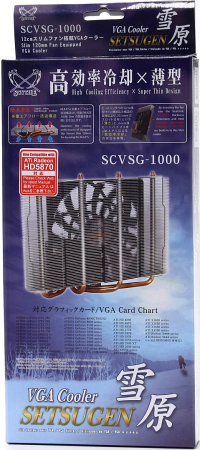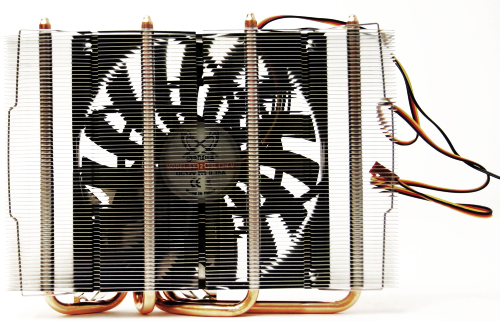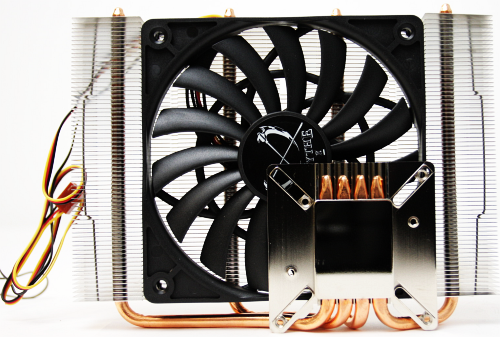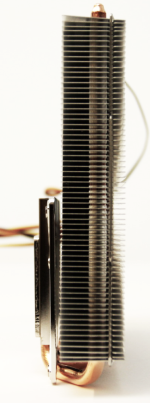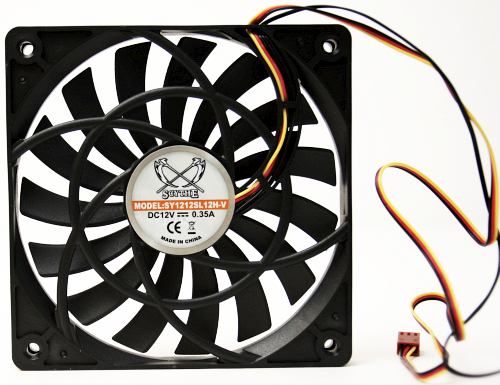

Review: Even manages HD4890
This review is also available in German.
Scythe is a well recognized brand in the PC cooling industry for about four years now. After the nice Musashi it was time for Scythe to bring a model on the market, the new Setsugen which should be capable to cool down the hottest cards.
Testbed:
Motherboard:
MSI P55-GD65 (provided by MSI)
Intel P55
CPU:
Intel Core i5 750 (provided by Intel)
CPU-Cooler:
Scythe Kama Angle (provided by Scythe-Europe)
Memory:
Mushkin 6GB Kit PC3-12800 (two modules) (provided by Mushkin)
1600MHz CL9-9-9-24 CR1T 1.65V
Graphics Cards:
MSI R4850-2D1G-OC (provided by MSI)
Sapphire HD4890 (provided by Sapphire)
Power supply:
PC Power & Cooling Silencer 500W (provided by PC Power & Cooling)
Hard disk:
Samsung F1 1000GB (provided by Ditech)
Case fans:
SilenX iXtrema Pro 14dB(A) (provided by PC-Cooling.at)
Scythe DFS122512LS
Case:
Cooler Master Stacker 831 Lite (zur Verfügung gestellt von Cooler Master)
The cooling system consists of four heatpipes with a nickel-plated copper GPU base and lots of typical aluminium fins. As you can see Scythe manages to fit the fan inside the cooler. This does save up some space, but we would have not cared if the cooler would have been bigger. Also the space between the GPU mounting and the fan is quite small which may cause problems with some heatsinks. For a cooler rated for about 200W TDP graphics-cards the design is very compact.
Let's take a look of the cooler in it's full glory:
While the fan is 12cm and only 12mm thick, it is not one of the quiet ones.
But the fan can be quieten by the fan-controller, which allows speeds between 800rpm and 2000rpm. At full speed the fan is clearly too loud to count as a silent solution, but at just 800rpm it is inaudible.
Sixteen RAM-coolers, several transistor coolers, thermal compound, a copper plate, mounting kit and instruction manuals in several languages complete the package.
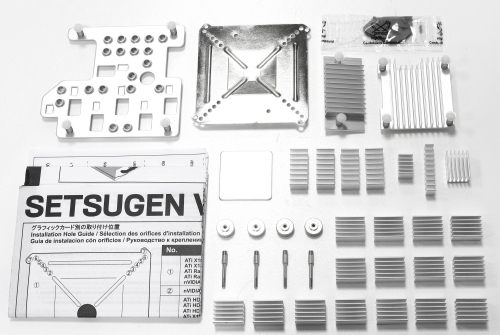
To test the cooler we used our test rig Radeon HD 4850 card from MSI, which annoys us with constant speed even in idle, because MSI messed up the firmware. The cooler does not feature any other cooling elements, so it's quite easy to fit the Setsugen. Just remove the old cooler and attach the Setsugen and you are finished.
The cooler is compatible with most cards on the market; just three cards, which are old Radeon 9550/9600 and GeForce 6600 GT AGP cards, are incompatible. Before you install the new cooler, go to the Scythe page and read the instructions for your card carefully.
If you are using a weaker card, such as Radeon HD 4600 series and lower and GeForce 9600GT and lower, you can remove the fans and make it completely passive, as long as you don't try to overclock and have sufficient airflow in your case. Either way, the cooler is using a second slot.
We ran all tests with the lowest RPM setting possible, we connected the fan to the mainboard and set the control knobs to the lowest possible position.
MSI Radeon HD4850 stock cooler idle:
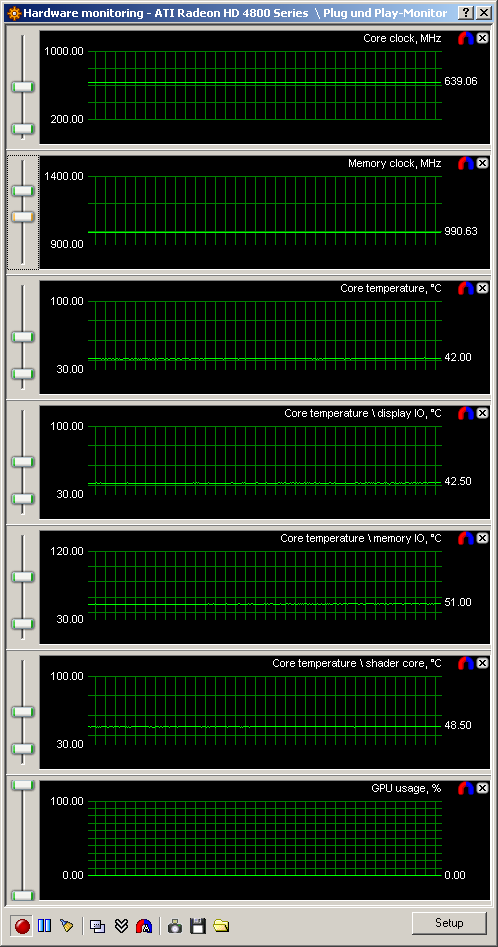
MSI Radeon HD4850 Setsugen idle:
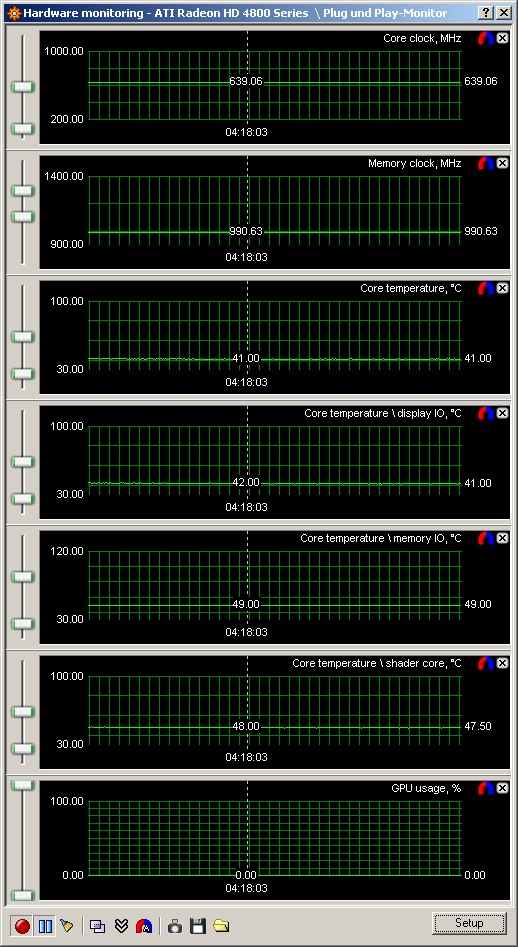
MSI Radeon HD4850 stock cooler 3DMark2003:
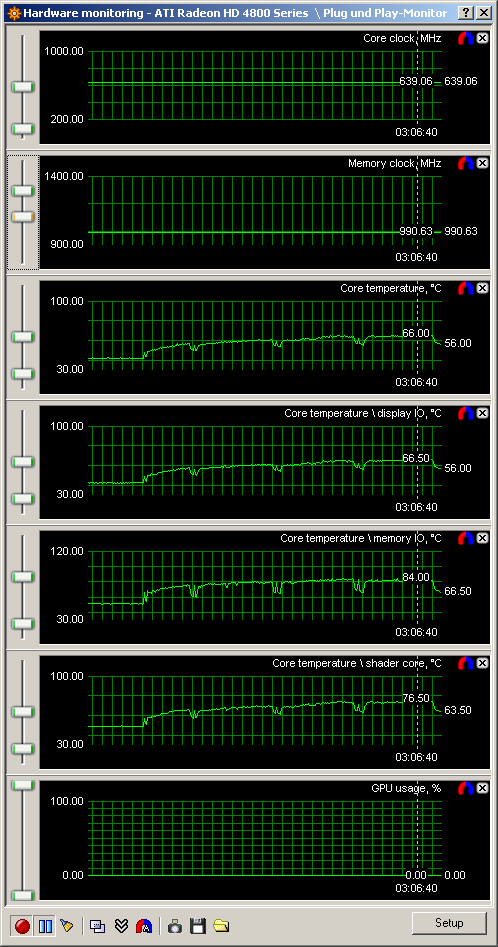
MSI Radeon HD4850 Setsugen 3DMark2003:
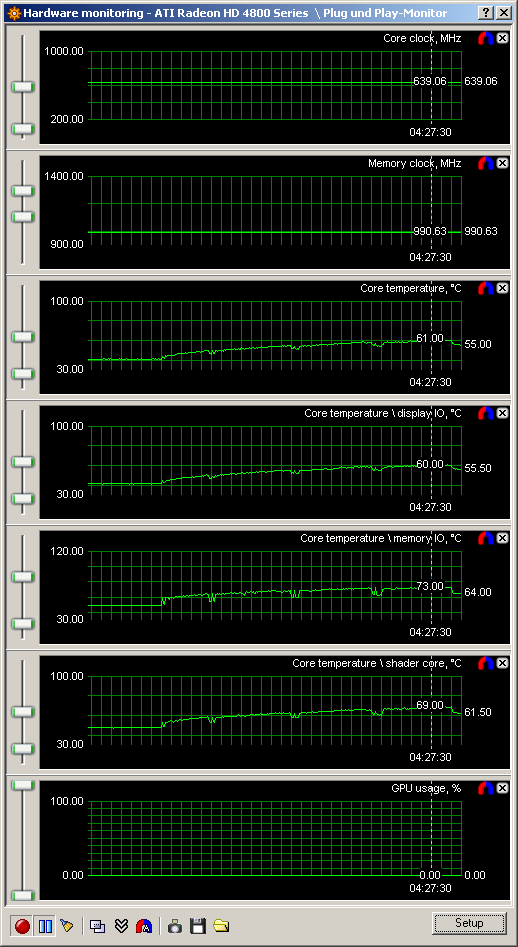
MSI Radeon HD4850 stock cooler 3DMark2006:
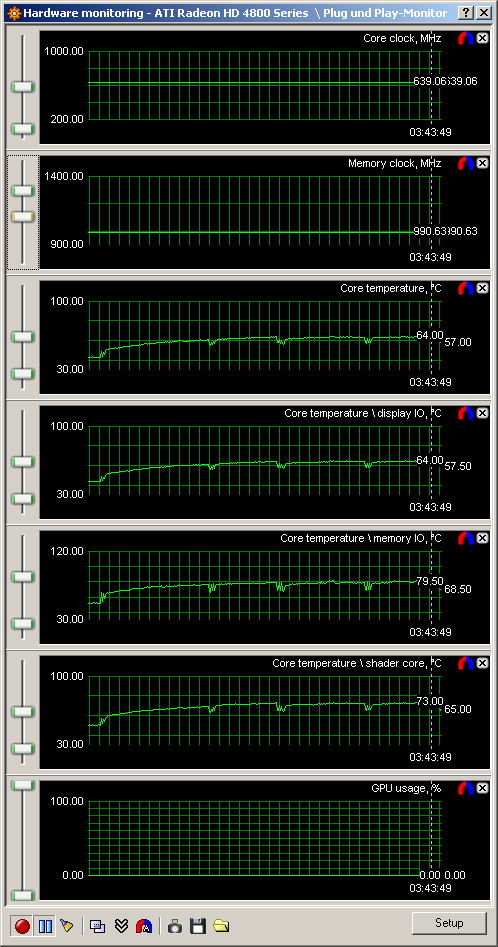
MSI Radeon HD4850 Setsugen 3DMark2006:
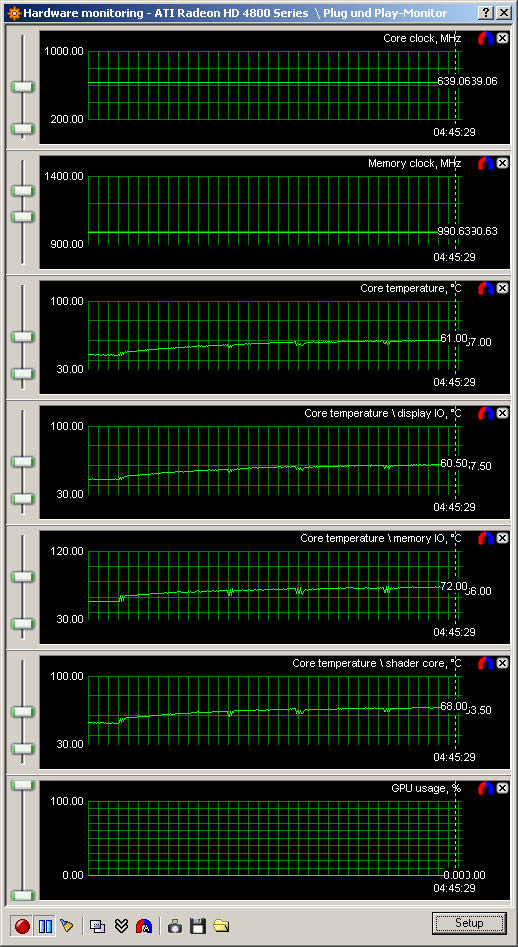
The results are not impressive at all, so we thought, what happens when we flip the cooler, so the fan can blow onto the card?
MSI Radeon HD4850 Setsugen blowing idle:
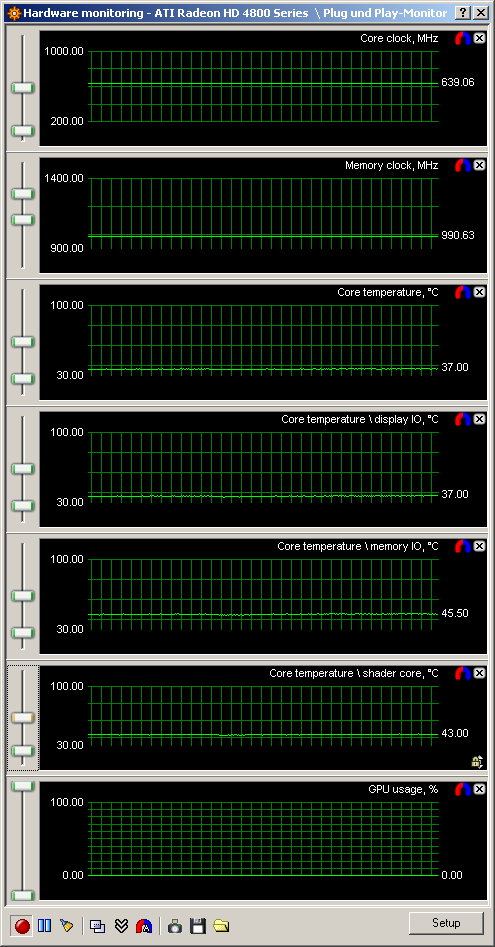
MSI Radeon HD4850 Setsugen blowing 3DMark2003:
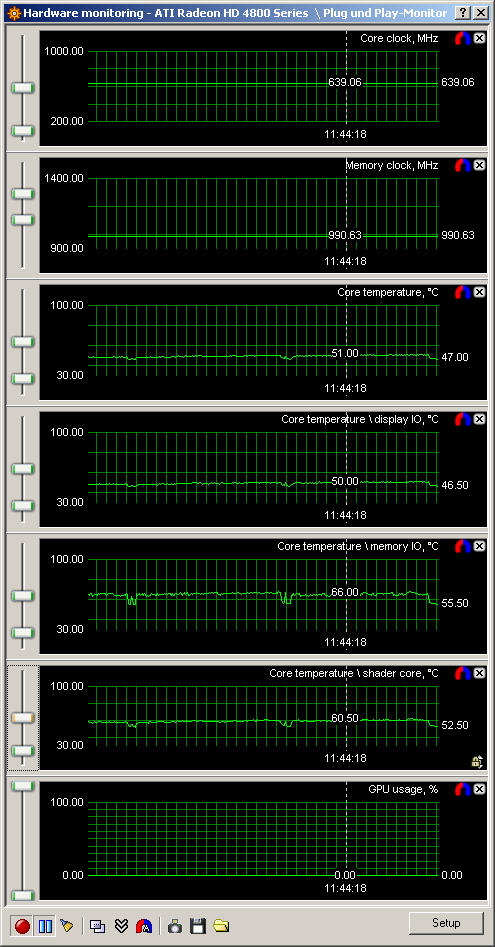
MSI Radeon HD4850 Setsugen blowing 3DMark2006:

With the much better results we also tried the Furmark Benchmark. This benchmark is causing a lot of stress for any graphics card and you can forget the TDP because Furmark does exceed it a lot.
MSI Radeon HD4850 stock cooler Furmark:
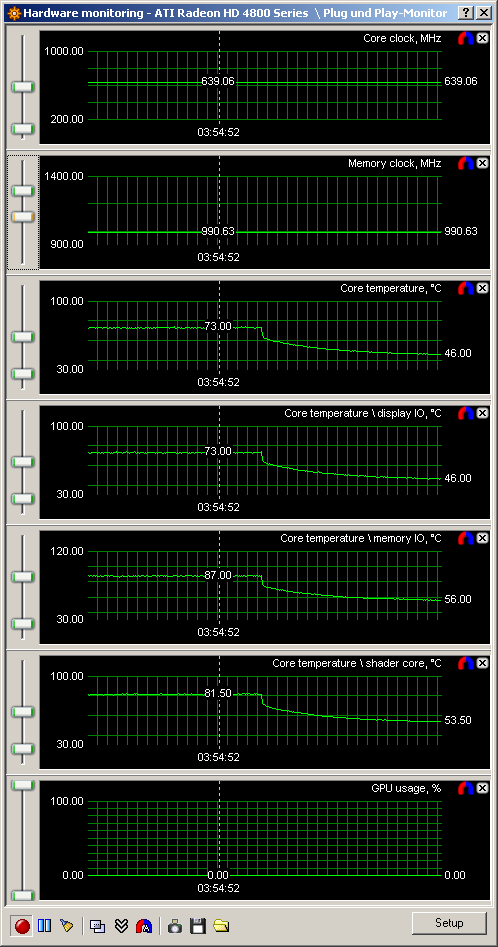
MSI Radeon HD4850 Setsugen blowing Furmark:
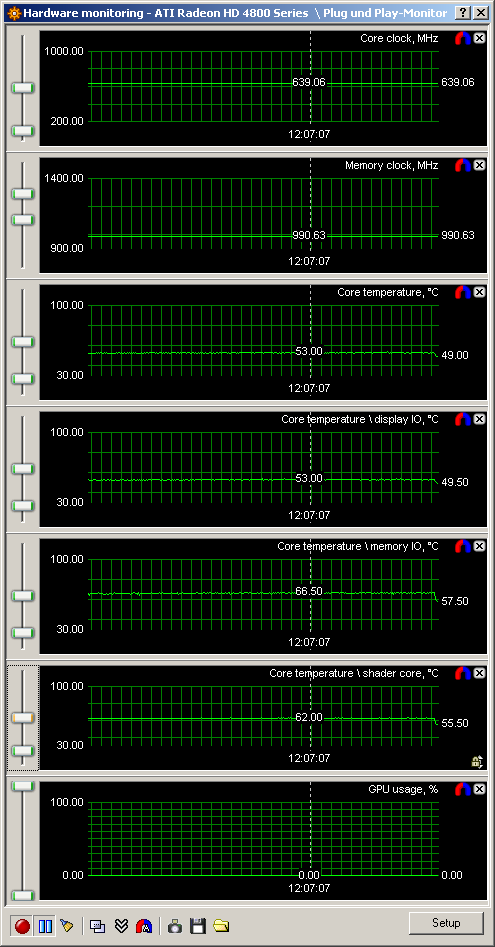
The more interesting question is, whether this cooler can keep up with an HD 4890, which will suck up to 190W under full load. Of course we know now, in our case the cooler works much better when flipped, so the fan is blowing air onto the card. This is especially important because even the memory chips on the HD4890 get hot very easily. The fan remained at the lowest setting possible.
ATI Radeon 4890 idle:
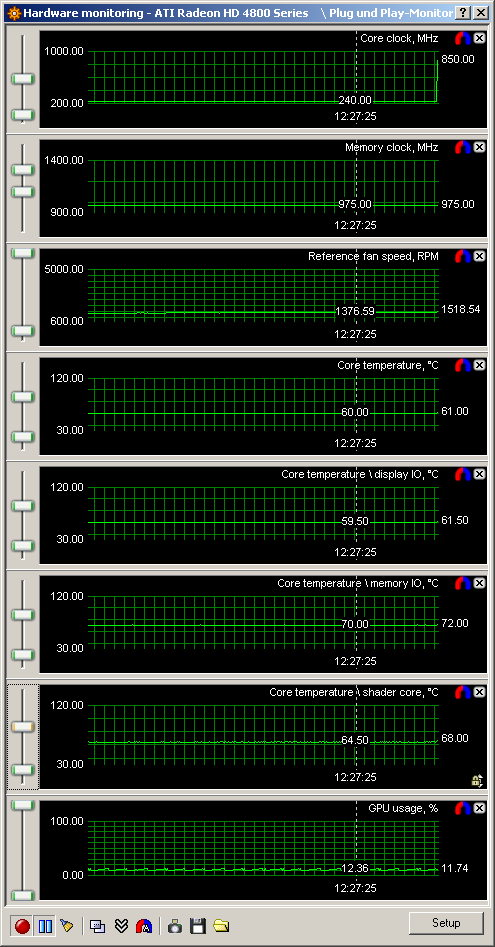
ATI Radeon Setsugen blowing idle:
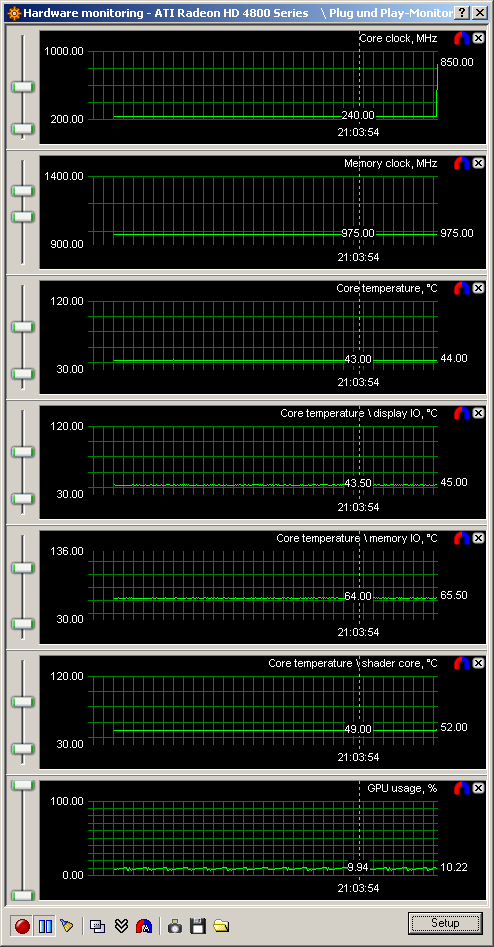
ATI Radeon 4890 3DMark2003:
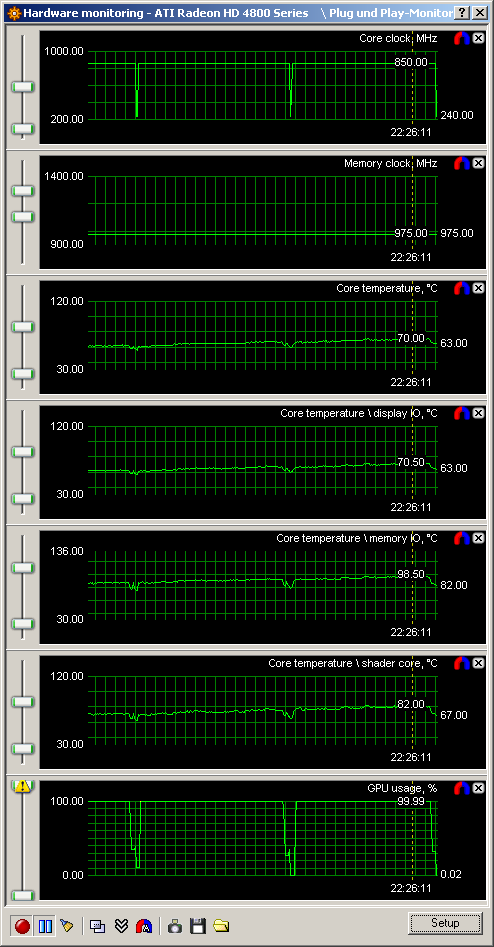
ATI Radeon Setsugen blowing 3DMark2003:
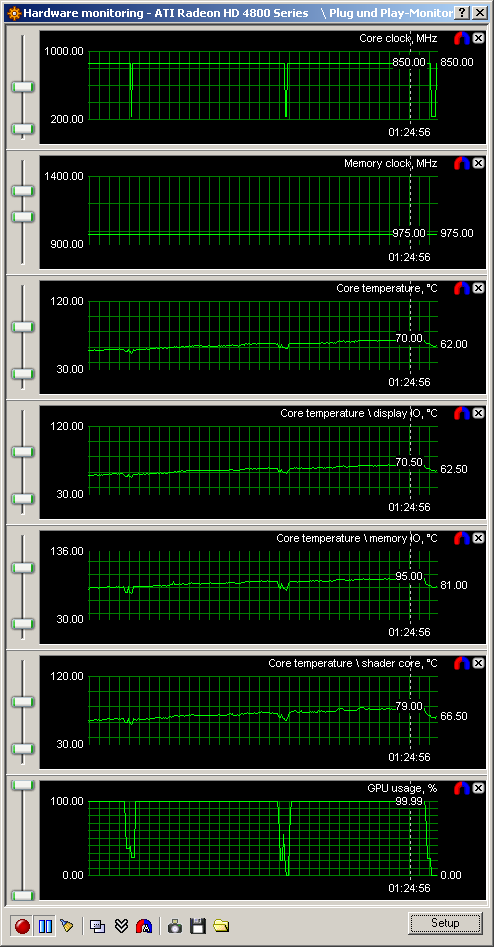
ATI Radeon 4890 3DMark2006:
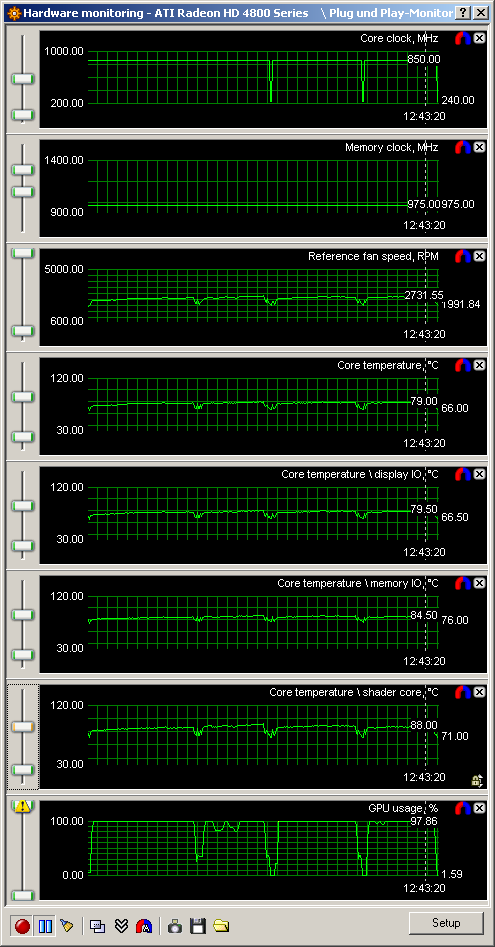
ATI Radeon Setsugen blowing 3DMark2006:

As you can expect, the Futuremark benchmark does cause the stock cooling of the HD4890 to sound like a vacuum cleaner, the Setsugen on the other hand, keeps running stable even with the lowest fan-setting.
ATI Radeon 4890 Furmark:

ATI Radeon Setsugen blowing Furmark:

While we were very impressed with the Musashi, the Setsugen is also a top product. You have to test which fan configuration is working in your system, but we suspect a fan blowing onto the card is the best option for most of the users. Changing the fan is not that easy, but with a bit of patience it is manageable. The wobbling of the Musashi has been reduced, but the mounting screws are still too small for ATI cards, but the cooler sat firm. It would not have hurt if Scythe would have added a second set for ATI cards.
With the fan speed set to the lowest setting, it's nearly inaudible. The higher the settings naturally the higher the noise-level. But even with the HD4890 rated at 190W, it can run easily with the lowest fan setting. This is impressive. If you want to overclock you need a higher fan setting, but it's still quieter compared to the stock coolers.
This product will set you back about €33,- which is very competitive compared to other high-end cooling solutions or such as Sapphires Vapor cooler. The Setsugen will hit retail in the first week of December. UPDATE: Meanwhile the first listings have appeared at our price search engine here.
Overall, we can highly recommend the Scythe Setsugen.


